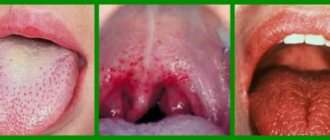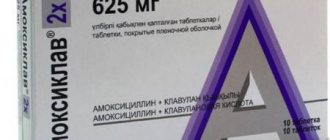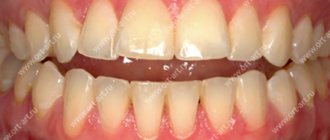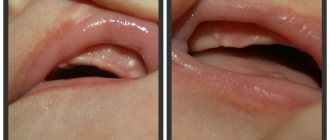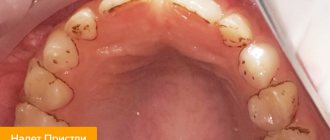A dental disease that causes a red rash in the mouth
Stomatitis is a disease that can cause the formation of red dots on the upper palate. This is an inflammatory process that occurs in the oral mucosa. It can be of fungal, viral or bacterial origin - it all depends on what specific pathogen has penetrated the mucous membrane.
Viral stomatitis
Caused by the herpes virus, small rashes appear not only on the palate, but also on the inside of the cheeks and lips, and tongue. The first two days of illness, the rash remains red and large, and then it transforms into blisters that are filled with serous fluid - clear or cloudy.
Viral stomatitis in each case is accompanied by elevated body temperature, weakness, lack of appetite and pain, a burning sensation in the mouth. This form of the disease is mainly diagnosed in adults and newborns.
Bacterial form of pathology
Most often, the oral mucosa is affected by staphylococcus and streptococcus. It is the latter that is considered the most dangerous, because it provokes various kinds of complications, including general blood poisoning. Bacterial stomatitis in almost every case ends with the development of tonsillitis, tracheitis or pharyngitis.
Red dots appear on the white palate, they never merge, but cause some discomfort to the patient: they itch, there is a burning sensation, the sensitivity of the mucous membrane to hot and cold, sour and salty increases. After a few days, the rash becomes barely noticeable, but the patient’s body temperature rises, and one of the above diseases rapidly develops.
Fungal stomatitis
Most often, the fungus affects the mucous membranes of those people who have weakened immune systems. In an adult, this can happen due to prolonged use of certain medications or a long course of the disease. Children often suffer from fungal stomatitis. “Thrush” develops due to constant licking of toys, pieces of furniture and imperfect immunity due to age.
There are not only red rashes in the mouth, but also a white coating. It is characteristic of this disease and helps to make an accurate diagnosis and prescribe effective treatment. Additional symptoms include pain and burning in the mouth, restlessness in a child, and a feeling of fatigue in an adult.
The reasons for the appearance of superstitions and signs about the red sunset
The atmosphere of our planet consists of various solid and dust particles, as well as water vapor. Having their own density, they refract the sun's rays differently. Any color wave is fundamentally electromagnetic. When the sun is at its zenith in the middle of the day, its rays have to overcome a small height, and at this moment we observe only their white spectrum. The air seems transparent.
The lower the sun is above the horizon, the more difficult it is for the rays to overcome the layers of the atmosphere, therefore the longer the path. As a result of scattering, we can observe the red spectrum that colors the sky. The remaining shades of the spectrum are absorbed by particles in the air. Such a sky simply could not help but attract the attention of our great-grandmothers. They carefully observed nature and left us a lot of valuable advice.
Other reasons for the appearance of red dots in the sky
In addition to stomatitis, there are many diseases that manifest themselves as small rashes on the oral mucosa:
- ARVI (acute respiratory viral infections). This is a rare case, but if the patient suffers from a runny nose and is forced to breathe through the mouth, then excessive dryness of the mucous membrane leads to the appearance of a small red rash.
- Herpetic sore throat. A characteristic symptom of this pathology are vesicles - formed bubbles with white contents. Over time, they burst and painful ulcers form in their place. Vesicles spread throughout the oral mucosa, so red dots on the palate may be the primary symptom of the disease. Additionally, the patient complains of severe sore throat, high body temperature, and enlarged regional lymph nodes.
- Diseases of the cardiovascular system. High blood pressure and fragility of blood vessels sometimes lead to the formation of small red rashes. And not only on the skin! The periodic appearance of the syndrome in question on the oral mucosa may be accompanied by headache, dizziness, shortness of breath, which means pressure instability. You should contact not only a dentist, but also a cardiologist regarding the problem.
- Allergic reaction. It is difficult to determine what exactly caused the appearance of red dots in the mouth. The fact is that the allergen first accumulates in the body and only after a few days can it manifest itself as symptoms. If you suspect an allergy, you need to examine the whole body: rashes will definitely be present on the elbows, behind the ears, and under the knees.
Adults and children sometimes develop a red rash in the mouth due to cancer with localization of the malignant process in the mouth, vitamin deficiency and tuberculosis. But such causes are recorded extremely rarely, although it is worth undergoing a full examination to exclude serious diseases that occur without typical symptoms.
Ask Ethan: Why is the sky bright and red on Mars?
An image from the Opportunity rover shows part of Marathon Valley as it appears from the north.
The image was taken by the Mars rover's Pancam camera on March 13, 2015. You can learn a lot about a world by studying its atmosphere. For example, on Earth, the optical properties of light passing through our atmosphere tell us about its composition, reflectance, density, and more. If our atmosphere were much thinner and less dense, the sky would not be as blue, sunsets would not be as red, and the overall brightness of the sky would be less. On Mars, the atmospheric density is 0.7% of Earth's, so even with lower gravity, its atmosphere is very thin and tenuous compared to ours. So why does the Martian sky appear so bright in images from Mars rovers? This is exactly the question our reader asks:
We physicists know that the sky acquires its brightness due to sunlight scattered on the matter of the atmosphere. The brightness of the sky is directly related to the mass of matter in the atmosphere. But what do we see in the images obtained from Curiosity, Spirit and Opportunity? Incredibly bright skies and incredibly blurry mountains. How can you explain this?
Self-portrait of Curiosity from 2015. This rover is the heaviest cargo ever landed on the surface of Mars, and even it weighs less than a ton. The quality of its camera, however, is sufficient to see the sky of Mars in the same colors as the human eye would see it.
There is no doubt that the sky on Mars is red and bright, not what one would expect simply by extrapolating from Earth's thinner, thinner atmosphere. This issue is constantly the subject of conspiracy theories, since what we see on the surface of Mars is very different from what we expected to see there. What could be the reason for this?
Mars's distinctive features have evolved due to its geological history, but the color of its atmosphere depends greatly on how, when and where it is viewed. It can range from yellow-brown to red and blue, depending on a number of factors.
Before your imagination jumps to conclusions that some people are sure to immediately jump to - such as that all the photos released by NASA are actually doctored photos from Earth - let me show you an image of the Earth that has not been modified in any way .
Al-Taqadum Air Force Base in Iraq, also known as Air Base TQ, during a sandstorm on Earth
Does this photograph resemble photographs you have seen of Mars? Probably depending on what images of Mars come to mind - and you might also think that the sky on Mars should be red rather than yellow.
In other words, you would prefer a photo like this:
Sandstorm in an unknown desert, May 2006
These photographs were not taken at sunset, but they were taken under very specific conditions on Earth. Namely, they were made in the presence of a large number of particles in the atmosphere. If you've been to places with a lot of smog, air pollution, or nearby forest fires, you've probably seen something comparable to what a sandstorm in the desert or the Martian atmosphere looks like.
If you look at photographs of Mars taken by different rovers in different locations, you'll see that the colors vary quite a bit.
The surface of Mars is terribly inhospitable to life forms as we know it. Distant mountains and the sky will look different depending on the density of particles in the atmosphere.
What causes this discrepancy?
There are many factors at play here. The rover's cameras—which are slightly different from each other—do make a difference. But this is not the main factor in changing colors; There are physical explanations for the differences between landscapes and skies. Among them:
- The amount and density of dust in the Martian atmosphere at the time of filming;
- The physical size of dust particles, varying in time and space;
- The location of the Sun in the sky relative to the camera.
Variations in the image we see when looking at Mars may reveal subtle but extremely important properties of this world and its atmosphere.
Hubble images of Mars, especially areas with clouds and ice, show the blue color of this part of the world, which indicates the size of ice particles in the atmosphere of Mars.
Why, for example, does the sky of Mars sometimes appear blue? The image above, taken from afar by the Hubble Telescope, matches what Pathfinder first saw of the surface of Mars - a sky that could be covered by clouds of water ice made up of very small particles. They are perhaps ten times smaller in size than normal Martian dust and a thousand times smaller than the thickness of a human hair. These particles, being smaller than the wavelength of visible light, appear bright in the blue part of the world, but are virtually invisible in red light. From this we learn an important scientific lesson: the ice particles in the clouds of Mars are extremely small.
On Earth, during sunset or sunrise, the sky on the opposite side of the Sun, free of particles, appears blue, even though the Sun and its surroundings appear red. What's happening on Mars?
A wide-angle photograph of a sunset on Mars taken by the Spirit rover in 2005. Note the bluish color near the Sun, and compare it with the reddish color of other parts of the sky.
The sky of Mars near the Sun appears blue, while the sky far away appears red. The solar disk appears almost white, with a slight blue tint. This is not due to clouds or ice, but only to Martian dust permeating the planet's atmosphere. Dust in the atmosphere, like dust from sandstorms on Earth, absorbs blue light, causing the sky to appear mostly red. However, dust scatters some blue light into the region near the Sun due to the size of the dust grains. If you watch the Sun set on Mars, as Curiosity did in 2015, you will see the incredible visual effect of the blue setting Sun.
Sunset, view from Gale Crater;
photo taken from Curiosity on April 15, 2015 Mars looks completely different from what we expected before we got there, because it is full of dust - not only on the surface of the red planet, but throughout the atmosphere. Of course, sometimes there are sandstorms on Mars, which further enhance this effect, and sometimes the density and amount of dust increases or decreases, and this affects the picture. But this is not just the transparent atmosphere familiar to Earth; dust is suspended in it, making distant objects difficult to see. Dust grains on Mars are large and primarily absorb blue light, meaning the light reflected from the particles will be predominantly red. Also, due to the large number of particles, the Martian sky will be brighter than one would expect - brighter than if the dust were not there.
Mars and its thin atmosphere as seen by the Viking spacecraft in the 1970s. The bright red color of the atmosphere is due to the presence of dust in it.
We didn't even have to land on Mars to see it: the Viking missions that approached Mars in the 1970s took a close look at the Martian atmosphere from space. The red glow was clearly visible from tens of thousands of kilometers away, and blocked more light than would have been the case if the dust had not been there. Scientists have even been able to understand the mineralogy of Martian dust based solely on light absorption effects. Total:
- The clouds of Mars are made of tiny ice particles;
- There is much more dust on Mars than on Earth;
- The dust is red;
- It mainly absorbs blue light;
- Red light is mainly reflected from it, in the line of sight of the Sun;
- This causes the sky to appear red, the sky near the Sun to appear blue, distant mountains to appear blurry, and clouds to appear blue.
That's why the atmosphere on Mars looks like this, and this is supported by evidence that has been collected for decades. You can't apply the physics of Earth's atmosphere to Mars and expect meaningful results. Mars is literally a whole new world.
How to treat red dots on the sky
Therapeutic prescriptions must be made by a doctor, because it is impossible to make a diagnosis on your own. If your throat hurts badly against the background of red rashes, this does not always mean the development of a sore throat. For example, scarlet fever, cancer, tonsillitis and other pathologies will also “show” such symptoms. First, the specialist finds out the true cause of the phenomenon in question and only after that makes prescriptions:
- antibacterial drugs, if the cause of red dots is the settlement of pathogenic bacteria in the oral mucosa;
- antiviral – when a herpes virus is identified as the causative agent of the disease;
- antifungal if fungi are found in the mouth during examination.
As part of complex treatment, local antiseptics are also used, which help eliminate acute inflammation and discomfort. The red throat becomes paler, and it hurts much less, which leads to the restoration of general condition and appetite. These products include solutions “Miramistin”, “Chlorhexidine”. Metrogil Denta, Kamistad (gel) and Solcoseryl will also be effective.
No folk remedies will help, and independent choice of medications will not give results. They, of course, will make the symptoms less pronounced, but without eliminating the main cause of the appearance of red dots on the sky, it will not be possible to solve the problem.
The palate of the mouth is inflamed: how to treat it and where to go
Today, there are two main ways to treat pain and inflammation of the palate: at home and in a specialized dental clinic, with an ENT specialist or therapist. Treatment should be carried out only after determining the exact cause of the development of symptoms - improper treatment can only lead to aggravation of the problem.
If there are no prerequisites for serious diseases of the oral cavity: infectious, traumatic or burns, treatment can be carried out independently at home. First of all, you need to start by eliminating inflammation and pain. There are several folk and professional medical remedies that provide good effectiveness.
- To eliminate inflammation, use special herbal decoctions based on calendula and sage - they will soothe the mucous membrane and reduce swelling. Anti-inflammatory drugs can also be used. It is very important that in the first stages of treatment, inflammation is stopped and swelling is removed;
- If a pimple appears on the roof of the mouth, it is necessary to use special medications, such as: Chlorophyllipt, Chlorhexidine or Rotocan - they have a more powerful effect and limit the further spread of the inflammatory process to adjacent tissues of the oral cavity;
- If there is pain, it is necessary to use painkillers, as well as dental gels, such as Kamistad, Cholisal or Kalgel.
Particular attention should be paid to pain and inflammation of the palate caused by fungal etiology, which is accompanied by an unpleasant odor from the oral cavity. In this case, broad-spectrum antifungal agents are used; it is not recommended to treat this problem on your own.
If the cause of palate pain is aphthous stomatitis, it is recommended to use oils based on rosehip and sea buckthorn, and use propolis tincture for rinsing.
The roof of the mouth hurts: causes and treatment in dental clinics
The services of highly qualified specialists are an opportunity to eliminate the problem quickly and safely for health. Already at the first appointment, the doctor conducts a comprehensive examination and diagnoses the problem. This approach allows us to determine the exact cause of the development of symptoms, as well as prescribe adequate treatment, taking into account the individual characteristics of the patient.
Are you experiencing discomfort and want to treat an inflamed palate in your mouth? Contact the specialized dental clinic "Alpha Dent" in Orenburg! Our specialists will conduct a comprehensive diagnosis, determine the cause of the problem and prescribe adequate treatment!
